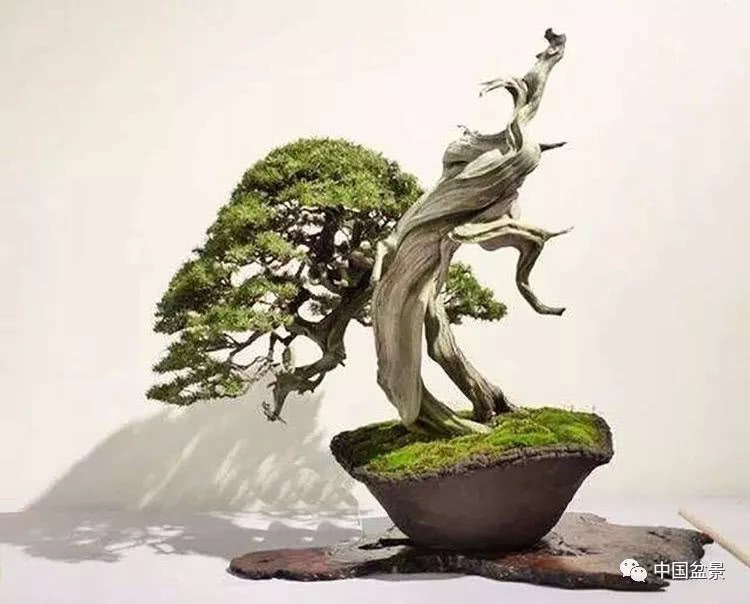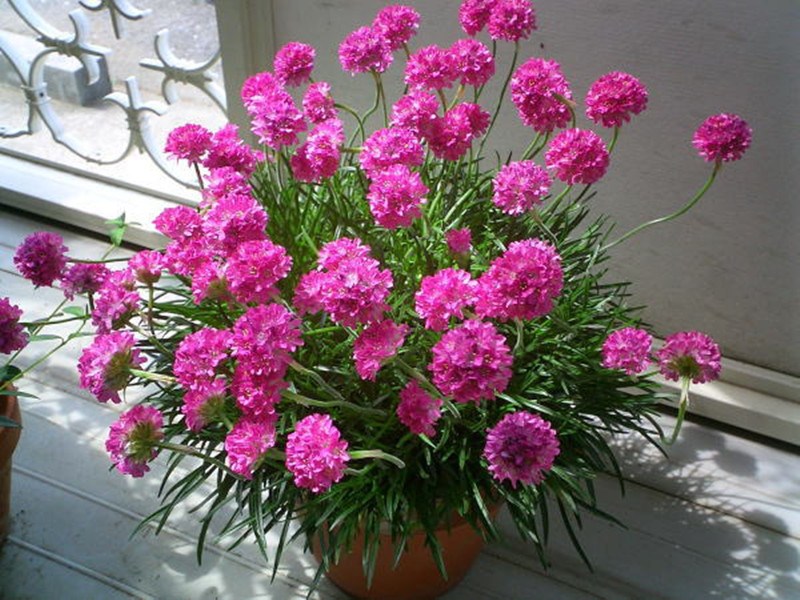The benefit, dryness and rotten noodles of Lingnan bonsai are intriguing.

[bonsai]
The "Shili", "dry" and "rotten noodles" of Lingnan bonsai
Original author | Ye Yijian (Jiangmen Xinhui, Guangdong)
There is no concept of "Shili" in Lingnan bonsai, only the dry composition of "withered" and "rotten noodles" (large area wood withered) is used to express the connotation of artistic conception and charm. The concept of composition and production of "Shili" is a modeling technique of absorbing foreign countries in recent times. In fact, the meanings of the three are all in the philosophical expression of the contrast between "withered" and "Rong". The difference is in the specific production, the structure of the composition level is different, the artistic conception and charm expressed is more diversified, and the composition is more colorful.
It is generally understood that "Shili" plays a role of embellishment on a small part of the branches; "withered" is the philosophical effect of the contrast between withered and prosperous in the local composition; and "bad face", which plays a guiding role in the overall composition, is the main body of the composition, gradually forming a virtual image composition picture dominated by withering. In this paper, the application of the dry composition of "Shili", "dry" and "rotten noodles" in Lingnan bonsai art is described as follows.
1. Shili: a Buddhist term. Is the crystallization of the practice, called Sharizi, a small number of rare essence.
In the bonsai art modeling, its special Daoxing crystal (Sherizi) is symbolically embellished in the bonsai composition in the form of a small number of withered branches, setting off the active atmosphere of withering and glorious. It is the overall structure of glory, and the charm lies in the connotation of Shili. Several divine branches in Liao and Liao are the quintessence of Shelizi (regarded as the witness of the virtue of Buddhist monks). See figure 1 and figure 2 of the example.
Photo 1 "Gaoshitu" tree species: mountain pine author: Ye Yijian
Photo 2 is an analytical diagram of Picture 1.
Analysis: "Gaoshitu", named after verve. "Gao Shi", an ancient scholar-official. The noble sentiment of profound knowledge, independence and widowhood contrasts with lowness, shallowness and vulgarity. From the bottom to the top, he built up the learned theoretical essence of the scholar-officials, the neo-Confucianism system sublimated step by step, the lofty character of fame and wealth, and the composition of the special decoration of "Gaoshi" representative Kong Ming, which was shown as evidence (induction). This shape is a typical Lingnan high leptin kernel style.
Second, withering: the meaning of tree trunk withering, or partial withering.
The meaning of withering in Lingnan bonsai art is different from that of Shili branches. the connotation of withering lies in the balance between "withering and glorious" in composition, which induces the charm of artistic conception in contrast and contrast, which plays a role of adjustment and orientation. In the actual composition, the meaning expressed is different and intriguing.
For example, Mr. Zhu Bennan's potted nine-li fragrant bonsai is entitled "combining strength with softness". The expression of withering and honoring is an eye-opener. Its "withered" obviously highlights the importance of "glory", and its "glory" has become the supporter and protector of "withered". If there is no luxuriant growth maintenance, its "withered" already does not exist, may have become a waste. This is the relationship of interdependence, mutual use and mutual dependence, which is indispensable, and it is the joint of the balance between "withering and glorious". See photo 3.
Photo 3 "combining strength and softness" tree species: Jiuli incense author: Zhu Bennan
Photo 4 is an analytical diagram of Picture 3.
Analysis: Lingnan bonsai art modeling has always advocated "beautiful trees". The traditional concept of dry, rotten noodle bonsai is not loved by people. Cut off and store branches of the scar, must be wound healing, can not reveal man-made scars, is a qualified work, and set it as the maker's skill (maturity) measure. As for the dry, think that because there is no life, lifeless; sunset, toward decline, no future bonsai. Not only the form is difficult to maintain, but also the artistic conception is ominous, so it has always been unpopular. The so-called "pretty tree" is to take "glory" as the main body and completely negate the opposite of "withered".
The "combination of strength and softness" in the photo just rebelled against the shape of Lingnan "pretty Boy Tree" bonsai, becoming the opposite of "withered and prosperous". There is contrast and contrast, is the relative balance between withered and prosperous, set off each other, take care of each other. Strong and powerful drooping branches, all supported by the upright dry next to it, while the dry supporting it appears so majestic and tall, in the overall composition, there is no doubt that it belongs to the feeling, attracting people's attention.
Third, bad noodles: because the traditional Lingnan bonsai advocates "beautiful trees", there is no bad noodle style, and it is also unpopular.
The reason is the same as the above situation, so I will not repeat it. However, in the relationship between "withered" and "honorable", it is uniquely dominated by "withered", followed by "honored". The withering of a large area is the theme of composition modeling, and it is a betrayal of Yi Yi in the artistic modeling of Lingnan bonsai. On the contrary, it brings a sense of surprise to the connoisseurs. driven by rebellious psychology, it gradually becomes ugly and beautiful, and under the careful conception and cultivation of the makers, it gradually becomes the "kind" shape of Lingnan bonsai. With the change of traditional ideas, deeper innovation leads the trend forward. Try to describe Yuan Rongen and Yuan Qirui's Acacia works "take off" and "heroic posture of iron bones".
Photo 5 "take-off" tree species: Acacia collector: yuan Rongen
Picture 6 is a local magnification and partition diagram of picture 5.
Photo 7 "Iron Bone heroic posture" Tree species: Acacia author: yuan Qirui
Picture 8 is a local magnification and partition diagram of picture 7.
Analysis: the above two examples of Acacia bonsai pictures are "alternative" works of Lingnan bonsai art, which are so abrupt that I am afraid that readers cannot accept them. Any new thing, the existence of this state of mind is understandable, from knowledge to understanding, and then to familiarity, not strange, sublimated to acceptance, the so-called perceptual to rational. During this period, there are criticisms and suggestions, refusal to study, encouragement to praise, and hope to accept and move forward with a normal state of mind.
The above-mentioned "take-off" and "heroic Iron Bone" are indeed "alternative" grotesque works in the artistic modeling of Lingnan bonsai. In the strange, we can stick to the artistic style of Lingnan bonsai without breaking away from the basic production method of cutting off the trunk and storing branches, and on this basis, we have rebelled against the style and shape of the traditional style, creating an original "alternative":
1, the production process is drastic, the embryo material cutting dares to abandon, insists on cutting and storing branches.
2. Shili, dry and rotten noodles make use of nature to make dry as much as possible, because the natural dry has "sunk oil". (note: after long-term weathering of wood, the plant itself can produce a kind of oil antibody to protect itself against external weathering and disease and insect erosion.)
3. Any withering must be provided under the protection of the cortex in order to maintain vitality and resist weathering and the continued erosion of diseases and insect pests.
4. The "crimping" of the cortex is used to protect the process of "making dry". The larger the crimping range, the better the vitality.
The cortex of "take-off" and "iron-bone heroic posture" in the picture obviously revolves around the edge of "rotten face", which is the characteristic of Lingnan bonsai. With the progress of time, more and more generous, natural "bad noodles", miraculous craftsmanship. It has the strange characteristics of emptiness, penetration, wrinkle and leakage, which is completely different from the artificial scars deliberately carved in some works. All out of nature, but also in nature, this is the highest state of bonsai art. The whole "bad noodle" sketched out a virtual mural, active and vivid painting meaning, coincidentally, artistic conception charm is produced here. The whole composition "bad face" accounts for most of it, and the essence is also in it.
Taking a comprehensive view of the above causes of withering: "Shili" is dominated by glory, followed by withering; "withered" is mainly balanced by prosperity and withered, with contrast mainly; "rotten noodles" is dominated by withering, followed by honor. The expression of their artistic conception and charm is different, their advantages complement each other, and they are colorful, which is the author's emotion in the innovation of "alternative". In order to open up the new thinking and new situation of Lingnan bonsai, do not shout for spare strength, applaud!
Wonderful playback:
Welcome to Chinese bonsai!
Bonsai exhibition hall that can be enjoyed at any time
Carry forward bonsai culture and exchange bonsai skills!
Enjoy bonsai art and share a happy life!
- Prev

This is what depression looks like. Do you have any such problems?
We all have the saying of "seven emotions and six desires". It can be said that no matter how cheerful a person is, he will be unhappy. In fact, it is the pressure brought to us by some things in our life, which sometimes make it difficult for us to pick up.
- Next

The new type of potted herbaceous flowers are as beautiful as geraniums with long flowering period, easy to burst pots and good maintenance.
Guide green potted plants is a necessary embellishment of home life, raising some flowers and plants at home, many benefits, not only can beautify the room, but also happy mood. "Huasheng potted Diary No. 1249" will introduce you to a new type of ornamental flower. Today.
Related
- Wuhan Hospital Iron Tree Blooming Result Was Instantly Frightened by the Gardener Master
- Which variety of camellia is the most fragrant and best? Which one do you like best?
- What is the small blue coat, the breeding methods and matters needing attention of the succulent plant
- Dormancy time and maintenance management of succulent plants during dormancy
- Minas succulent how to raise, Minas succulent plant pictures
- What are the varieties of winter succulent plants
- How to raise succulent plants in twelve rolls? let's take a look at some experience of breeding twelve rolls.
- Attention should be paid to water control for succulent plants during dormant period (winter and summer)
- Watering experience of twelve rolls of succulent plants
- Techniques for fertilizing succulent plants. An article will let you know how to fertilize succulent plants.

